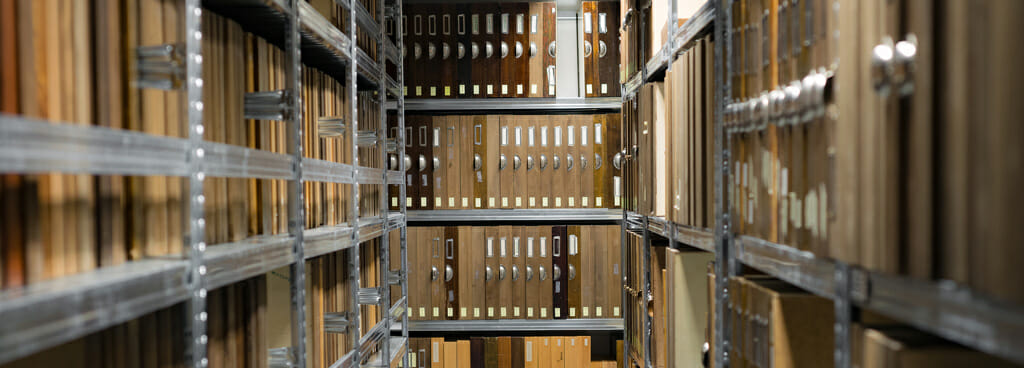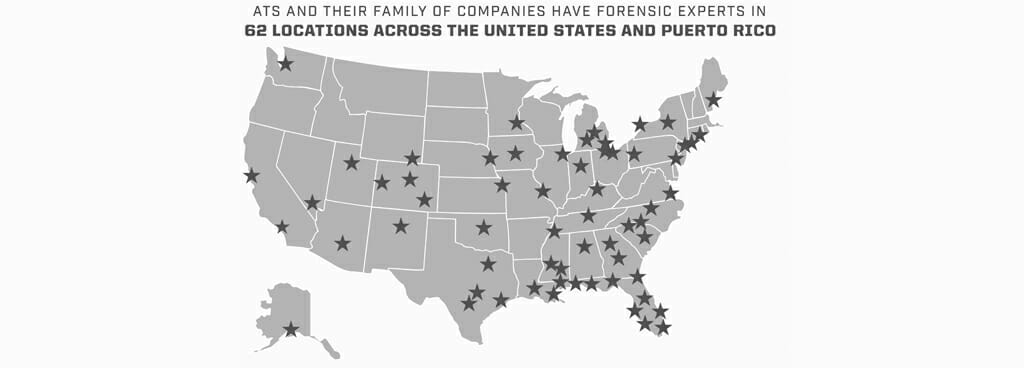- Home
- Services/IndustriesServicesindustries
- About Us
- LocationsStatesAccordion ContentAccordion ContentAccordion ContentAccordion Content
- Job Openings
- Quick Links
- ATS Family

Data Collection
Investigations and scene examinations are important to determine the cause and identifying possible parties for subrogation. The fundamental purpose of conducting an examination of any incident scene is to collect all of the available data and document the incident scene. This gathered data can be analyzed and provide supporting material for the hypothesis. The hypothesis can then be further developed and tested. And if the findings turn out positive, these results can lead to monetary recovery.
NFPA 921 Guide for Fire and Explosion Investigations 2017 edition says collecting data is “Facts about the fire incident are now collected by observation, experiment, or other direct data-gathering means”. The data collected is called Empirical Data. The definition asserts that data is based on actual measurements, observation or direct sensory experience rather than on theory. The data collected is called empirical data because it is based on observation or experience and is capable of being verified or known to be true.
This information is derived from one or more of the following means: interviews, review of previously conducted investigations, witness photos, security cameras, observations, alarm systems, and any other means that can supply information. This data is then analyzed, and hypotheses are then developed.
Of course, investigator error can result in inaccurate or inadequate information that can jeopardize the claim. However, another source of error can be introduced by the insurance professional (client) retaining the services of the investigator.
An instance of client induced error occurred during an investigation of a motor vehicle that had been involved in an accident. The client’s vehicle was eventually transported to a tow yard where the owner of the vehicle showed up and requested to retrieve his personal belongings from the car. The attendant allowed the owner to gather his belongings without escorting him to the vehicle. While the owner was at the vehicle, the car was all of a sudden involved in a fire.
Applied Technical Services, Inc. (ATS) was contacted by the client and requested to investigate the tow yard fire. I was conducting the investigation gathering the normal and customary data which included evaluating the car, conducting witness interviews and taking photographs. During this process, I became aware of several discrepancies where the fire patterns did not match the owner’s statements of how the fire had occurred at the tow yard.
The owner had told me that he first was aware of the fire when he noticed smoke emanating from the dashboard area. However, although the fire patterns showed an area of origin in the dashboard area, these patterns also indicated two additional areas of origin. One origin was within the engine compartment and another in the trunk. I continued my investigation by taking several fire debris samples and interviewing the other available witnesses at the tow yard.
During the interviews, a tow yard employee identified a security camera that captured the events leading up to the fire at the tow yard. While at the tow yard, I requested to watch the video, but unfortunately, the owner of the tow yard was the only individual with the password to gain access to the system. At that time, I had a phone conversation with the tow yard owner. He stated that upon his review of the video that it appeared the vehicle owner had intentionally set the fire. He also told me that I could meet with him the following day to personally review the footage. As I left the yard, I called the client and gave a status update of my findings and explained that I was planning to review the video footage. I was told to proceed.
However, within 30 minutes of this phone conversation I received a phone call from the client requesting that I not watch the security footage under the premise that observing this footage might bias my investigation. I considered this an unusual request because having the opportunity to view video that may have captured the inception of the fire at the tow yard would be valuable empirical data. In turn, this data can facilitate a more efficient and conclusive determination of the origin and cause of the vehicle fire. I proceeded with my investigation without my reviewing of the video.
Having examined the vehicle and interviewed available witnesses, I then obtained a Carfax report.iii Sometime shortly after a vehicle accident had occurred, the local law enforcement vehicle accident report number is posted. Fortunately, that was the case in this instance. Subsequently, I was able to purchase the accident report for $10 which ultimately provided me with the contact names and phone numbers of those that had witnessed the accident.
After interviewing these witnesses, I learned that all of them provided a uniform recollection that the client’s vehicle had a fire at the time of the accident. Each witness reported seeing flames coming from the engine compartment. One witness provided photographs that showed flames involving the engine compartment.
I provided a written report of my findings to the client. In particular, I concluded that there were three areas of origin. One area was attributed to a fire caused by the accident and the other two were incendiary (intentional human act). I was told later by the client that the owner eventually confessed that he had set the fires in the dash area and trunk.
The above example illustrates the importance of taking advantage of all the data. Although the tow yard owner provided me with his recollections of the video, based on past experience a trained fire investigator will typically note details that a layperson would miss. Had I reviewed the video, this investigation could have been performed in a more efficient, less costly manner.
A properly trained fire investigator understands the importance of not introducing personal bias into the investigation.iv Any data–be it video, witness statements, photographs etc.—has the potential to bias an investigation if utilized inappropriately. As a fire investigator, I am always mindful to not let any one piece of information bias my findings.
- NFPA 921 Guide for Fire and Explosion Investigations 2017, 4.4.3 Conducting the Investigation. 4.4.3.1
- NFPA 921 Guide for Fire and Explosion Investigations 2017, Chapter 4 Basic Methodology, 4.3.3 Collect Data.
- www.carfax.com
- NFPA 921 Guide for Fire and Explosion Investigations 2017, Chapter 4 Basic Methodology, 4.1* Nature of Fire Investigations


Request Form
"*" indicates required fields
Forensic Services
- 3D Laser Scanning
- Accident Reconstruction
- Accident Reconstruction Animation
- Accident Reconstruction Engineering
- Accident Reconstruction Experts
- Accident Reconstruction Services
- ACTAR - Traffic Accident Reconstructionist
- Arc Mapping
- Arson Investigators
- Asbestos Testing Lab
- Automotive Expert Witness
- Black Box Data
- Boilers, Vessels & Piping Failure Analysis
- Bosch Crash Data Retrieval
- Certified Arson Investigator
- Certified Fire Investigator
- Certified Forensic Expert
- Climate-Controlled Evidence Storage
- Construction Defect Expert Witness
- Construction Equipment Expert Witness
- Construction Expert Witness
- Crash reconstruction
- EDR Event Data Recorder Analyst
- Electrical Forensic Analysis
- Electrical Forensics
- Elevator Expert Witness
- Elevator Inspections
- Event Data Recorders
- Evidence Storage
- Evidence Storage Services
- Expert Witness Companies
- Expert Witness Services
- Explosion Investigations
- Farm Fire
- Fire Cause Analysis
- Fire Cause Investigation
- Fire Debris Analysis
- Fire Forensic Data Collection
- Fire & Forensic Investigation Updates
- Fire Investigation Company
- Fire Investigation Companies
- Fire Investigation Services
- Fire Investigator
- Fire Investigator Atlanta, GA
- Fire Investigation Expert Witness
- Fire Retardant Standards
- Fire Scene Investigaton
- Fire Scene Investigators
- Firearms Testing
- Forensic 3-D Site Scanning Service
- Forensic 3-D Scanning
- Forensic Accident Reconstruction
- Forensic Assignment Form
- Forensic Building Consultants
- Forensic Chemical Analysis
- Forensic Construction Expert
- Forensic Crash Specialists
- Forensic Electrical Engineer
- Forensic Engineering Consultants
- Forensic Engineering Expert
- Forensic Engineering Expert Witness
- Forensic Expert Witness
- Forensic Fire and Explosion Investigators
- Forensic Fire Investigation
- Forensic Fire Investigations
- Forensic Fire Investigation Services
- Forensic Imaging Specialist
- Forensic Lab Testing
- Forensic Locksmith
- Forensic Metallurgist
- Forensic Metallurgy
- Forensic Specialist
- Forensic Structural Engineer
- Forensic Structural Engineering
- Forensic Structural Engineering Firms
- Forensic Testing Service
- Forensic Thermal Imaging
- Forensic Tire Expert
- Forensic Water Damage Evaluation
- Forklift Expert Witness
- Golf Cart Expert Witness
- HAAG Certified
- Hail Damage Roof Inspection
- Handgun Testing
- Hurricane Structural Damage Evaluation
- Hurricane Structural Damage Inspection
- IAAI Certified Fire Investigator
- Incident Reconstruction
- Industrial Accident Investigation
- Infrared Thermal Imaging Services
- Joint Inspections
- Lap Shear Testing
- Large Loss
- Litigation Expert Witness
- Litigation Support
- Maritime Expert Witness
- Mechanical Forensics
- Natural Disaster Inspections
- Precision Forensic Testing
- Product Liability Expert
- Product Liability Expert Witness
- Secured Evidence Storage
- Special Services
- Speed Control Deactivation
- Structural Analysis
- Structural Fire Damage Assessment
- Structural Investigation
- Tire Failure Expert
- Traffic Accident Reconstruction
- Thermal Imaging
- Thermal Imaging Services
- Traffic Accident Reconstruction
- Truck Accident Expert Witness
- UTV/ATV Expert Witness
- Vehicle Fire Investigations
- Water Damage Inspection
